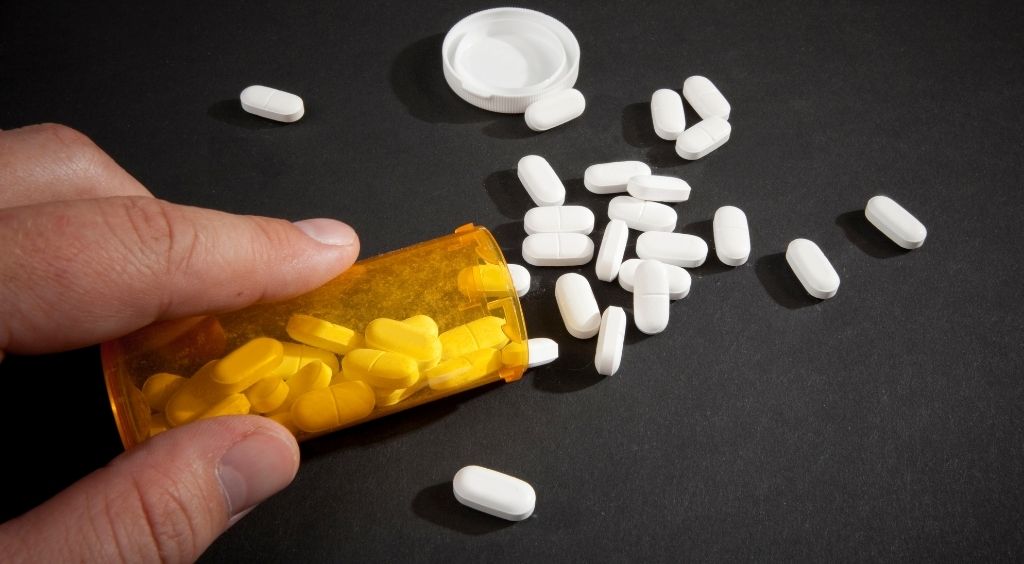
For those who are unlucky enough to end up in enough pain to get a prescription for Vicodin from their doctor, the opiate-based painkiller is simply a temporary aid meant to help provide relief from moderate to severe pain associated with injury or illness. Generally, a Vicodin prescription runs out as a patient’s pain subsides and the patient is able to resume their normal life pain-free and Vicodin-free. But for some people, the effects of Vicodin are long-lasting and can sometimes initiate a lifelong battle with addiction.
For those, what started with a seemingly harmless prescription from their doctor that was meant to help them ride out an injury or an illness turns into a painful secret that affects their relationships with loved ones, their careers, their financial security, and even their physical wellbeing.
Vicodin addiction can ruin lives, but how do you know if your use of the drug constitutes Vicodin abuse? And how can you tell if you’ve developed an addiction? Understanding the drug, the risks, symptoms, and causes are key to both prevention of and recovery from Vicodin addiction.
Vicodin comes in a tablet form and is a combination of the synthetic opiate, hydrocodone, and the common analgesic acetaminophen (an active ingredient in OTC painkillers). Generally speaking, Vicodin tablets contain about 300mg to 325mg of acetaminophen and varying levels of hydrocodone, ranging from about 5mg to 10mg.[1]
This combination is extremely effective in providing relief from moderate to severe pain. Usually, doctors instruct patients to take a single tablet every 4 to 6 hours, depending upon the intensity of their pain. If you have been prescribed Vicodin it’s important that you take the drug only as instructed.
Since acetaminophen occurs in a much higher dose in a Vicodin tablet, it’s easy to assume that the drug is as harmless as Tylenol or any of the other over-the-counter painkillers in which this is the active ingredient. After all, when was the last time you heard about someone abusing Midol? But it’s important to note that hydrocodone’s presence still poses the same risk of dependency as all other opiate class drugs.
As with all opiates, synthetic or natural, hydrocodone stimulates production of “feel-good” chemicals in the brain which is part of what produces its numbing effect on pain.[1] However, some users prefer the feelings of euphoria and safety that come with this extra rush of endorphins in the brain.
For those, it may be tempting to take an additional Vicodin to boost the effects, or to take another dose before instructed. It’s important to avoid this as Vicodin abuse – any inappropriate use of your prescription – can lead to Vicodin addiction or dependency. Dependency develops as tolerance builds. Some may experience unpleasant withdrawal symptoms if they have been misusing their Vicodin prescription which would encourage further use.
It’s hard to say who’s at risk for developing a Vicodin addiction. Research shows that any number of environmental and genetic factors play a role in the development of addiction.[2] But the easiest way to avoid a Vicodin addiction is to avoid Vicodin abuse altogether and take the drug only as prescribed.
Vicodin abuse comes with a number of symptoms both emotional and physical. It’s important to note that the acetaminophen present in Vicodin has the capacity to cause serious liver damage, especially in large doses with long-term use.[3]
Watch out for these physical signs of Vicodin abuse:
In addition to the physical symptoms, be aware of the possible emotional effects of Vicodin misuse. Depression, agitation, and anxiety are common, as are abrupt shifts in mood or behavior. As the condition worsens and an individual develops an addiction to Vicodin there may be a noticeable decline in their performance at work or school. Uncontrollable cravings for the drug, lying about their drug use, withdrawal symptoms, and tolerance increases are all also common as an addiction develops.
Whether you have continued taking Vicodin after your pain has subsided, or you’re concerned about your partner, parent, friend, or child’s use of Vicodin, it’s important to seek treatment as soon as possible. While recovery is possible at any stage of addiction, the more quickly that someone receives treatment–the better.
Treatment for Vicodin addiction includes a detox which can be performed either in a hospital, a rehab facility, a detox center, or even at home. However, the detox process can be challenging, and should those who undertake it should have proper support.
The long-term recovery from addiction can be just as challenging and will require just as much support. Addiction is a lonely disease and the best remedy is for people to surround themselves with a healthy, encouraging community.
Continued counseling either in an outpatient setting, an intensive outpatient program, or even weekly group therapy sessions can be incredibly helpful. Recovery coaching can also be helpful in maintaining long-term sobriety.
Wherever people choose to find help for their Vicodin addiction, it’s important not to try and undertake such an enormous task alone. Everyone deserves support and company on their road to recovery.
Michael Herbert, The Recovery Guide, has more than 30 years of experience working closely with individuals and families dealing with addiction and recovery issues. He is a seasoned Coach and can help you and your family establish long-term goals and access the tools you need for continued abstinence and recovery for the entire family. Get in touch with Michael today at 561-221-7677 to schedule an appointment.
References: